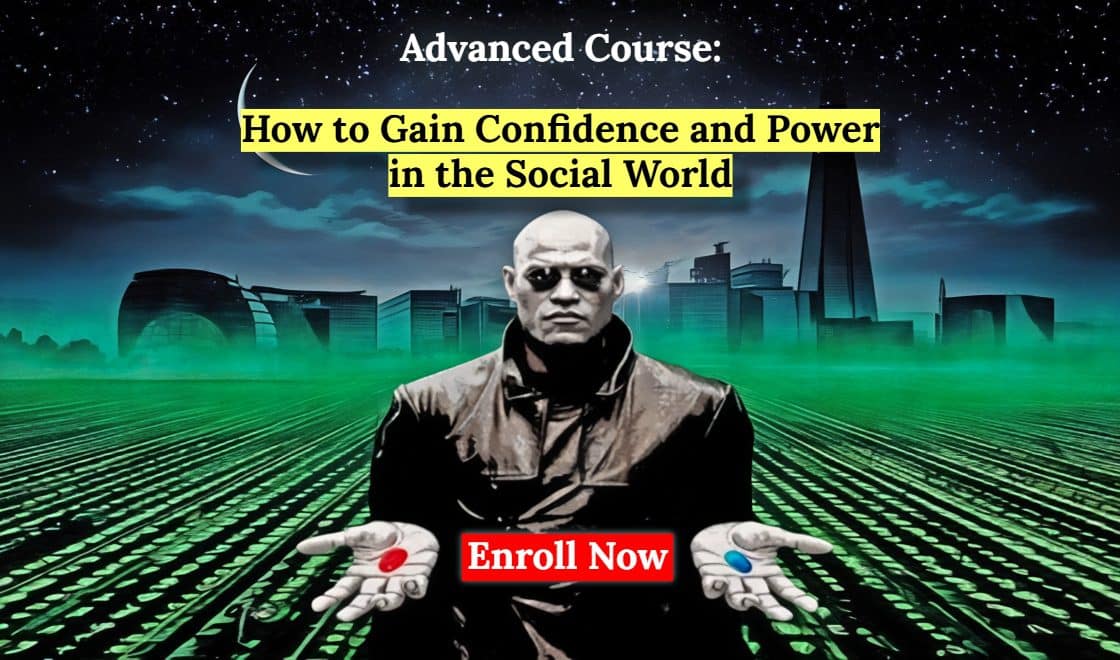I started as an awkward, socially anxious person. Then I read How to Win Friends and Influence People by Dale Carnegie, and it really made it easier to talk to people.
It’s no wonder that book is still one of the most influential guides on human connection.
But over time, I realized that being liked is not the same as being influential. People might prefer hanging out with you, and you still won’t be able to convince them to do something (even if it’s beneficial for them).
That’s when I stumbled upon a lesser-known approach.
If you want people to like you, support you, and even miss you when you’re not around, then it all comes down to mastering one sentence:
People will do anything for those who encourage their dreams, justify their failures, allay their fears, confirm their suspicions, and help them throw rocks at their enemies.
This is from Blair Warren’s One Sentence Persuasion. By applying these five insights, you can influence anyone, even complete strangers.
1. Encourage Their Dreams
Think about a time you shared an idea with someone, and they shrugged it off or changed the subject. It felt awful, right? And it probably made you close up. You didn’t share important information with them.
Now, think about the time when you told someone about your aspirations, and they told you that you seem like the kind of person who could really pull it off.
Even if you didn’t know that person well, you felt close to them and wanted to meet them again.
The reason is simple: Our dreams are closely tied to our identity. When someone believes in them, it touches us at a deep, emotional level.
That’s why it’s super important to listen to others without judgment and encourage their dreams.
But what should you do if you disagree with their idea?
Well, you show belief in the person, and express your doubts in the plan in a way that doesn’t make them feel defensive.
For example, let’s say your friend wants to open a bakery but they’ve no business experience.
You could say something like, “Your creativity in the kitchen is amazing. If you can figure out the business side, I can totally see people lining up for your stuff.”
2. Justify Their Failures
We all know it’s noble to take responsibility for our mistakes. But deep down, most of us avoid it because it brings the pain of guilt and shame.
That’s why we are drawn to those individuals who give us an out, who say, in some form, that it wasn’t entirely your fault.
I’m not talking about lying to them or telling them what they want to hear.
Again, it’s about separating the event from the person.
For example:
- “That timeline was unrealistic for anyone.”
- “Given the info you had, your decision made sense.”
- “The system was stacked against you from the start.”
Notice how each example acknowledges the challenge while preserving dignity.
Once someone feels you’re not there to shame them, they’ll be more open to reflecting honestly on what happened and how to improve next time.
To give you another example, let’s say your colleague delivers a sales presentation and it falls flat. Instead of saying that they made a basic mistake. You could say:
“Since the manager walked in halfway through, they missed the setup, and that would throw off any pitch. Next time, we can just hold off until all the key decision-makers are in the room.”
So you point out a specific external reason for their failure, you preserve their confidence, and then suggest an actionable fix for the future.
3. Ease Their Fears
When we’re anxious or afraid, everything else fades into the background.
Suddenly, logic goes out the window, and the worst-case scenarios take over.
If you tell someone to relax or calm down, or you list our facts and stats, then they will not listen to you.
So if you want to actually help them, start by acknowledging their fear and then offering perspective or reassurance.
For example, let’s say your friend is terrified of speaking in public.
First, you tell him something like, “It’s totally normal to feel nervous before a talk. One CEO I know started out feeling terrified, but now he gives talks in front of massive crowds.”
Second, you give advice: “One thing that helps is focusing on one friendly face in the crowd. It tricks your brain into thinking you’re just chatting with them.”
4. Confirm Their Suspicions
We all love that moment that makes us say, “I fucking knew it.” You know, it gives us a surge of pride… It’s a secret satisfaction that we’re smarter than the rest. That’s why, when you confirm their suspicion or, better yet, when you also give them a scapegoat for their problems, then you instantly become trustworthy in their eyes.
This doesn’t mean you have to agree with every wild theory. You just have to acknowledge that they might be right and explore it with them.
5. Help them throw rocks at their enemies
Psychologists like Gustave Le Bon have found that nothing unites people faster than a common enemy.
But “enemy” doesn’t always mean another group. It could be an institution, a system, an ideology, a disease, or even a stubborn problem that won’t go away.
If you can name the threat they’re facing and show that you’re on their side, you instantly become part of their tribe. You become someone they trust.
Now, if you’re concerned about ethics, you might consider this solution…
You can demonize or use as a scapegoat horrible bosses, politicians, corporations, or corrupt religious preachers, but don’t vilify ordinary people such as yourself.
The reason is that even if you start with good intentions, eventually, you’ll get consumed by your own ideology, and you’ll become a spiteful, miserable person.
Why Influence Matters More Than Ever
When Dale Carnegie published How to Win Friends and Influence People, his advice on smiling, listening, and making others feel important transformed how we built relationships. In the 1930s, that was enough to stand out. But today, in a world of crowded social feeds and competing agendas, you need more than likability. You need to become a truly influential person.
Blair Warren argues that influence doesn’t come from charm or logic, but from speaking to people’s hidden needs. This is why leaders who tap into these needs inspire loyalty, while those who rely only on likability often struggle to persuade people.
In The Forbidden Keys to Persuasion, Warren pushes further: most of us fail to persuade not because our ideas are wrong, but because we don’t know how to frame our message.
In addition, many of us look at influence as if it were some mystical thing. But psychologists like Robert Cialdini have explained that you can follow some predictable patterns.
He spent years embedding himself in sales floors, marketing teams, and fundraising groups, watching persuasion unfold in real time. From those studies, he identified universal psychological shortcuts that we rely on when making decisions.
Those principles of influence are reciprocity, authority, social proof, scarcity, liking, and commitment.
Influence is no longer optional… It’s a core skill for surviving and thriving in today’s world. If you don’t learn to use it consciously, you’ll end up on the receiving end of someone else who does.
Influence vs. Manipulation
Influence is like a gun. On its own, it’s neither good nor bad. In the right hands, it protects and guides people. In the wrong hands, it can destroy lives on a massive scale. (think of scammers and authoritarian leaders)
So the difference between ethical persuasion and manipulation comes down to intent.
You can use this skill to strengthen the bonds with others and convince them to act in ways that benefit both sides. OR you can use it to exploit them.
The Hidden Psychology of Persuasion
The five principles work because they connect to the deepest drivers of human behavior. Once you understand these mechanics, you see why persuasion cuts through resistance when nothing else does.
Identity First. We defend who we are before anything else. Encouraging dreams feels powerful because it affirms identity, not just ideas.
Resistance Is Automatic. Push someone and they push back. But if you align with what they already want or fear, resistance fades.
The Need to Belong. We’re wired for tribes. Nothing bonds people faster than facing a threat together, even if the “enemy” is just an unfair system.
Emotion Before Logic. Decisions are driven by fear, hope, and pride long before logic kicks in. Reassurance or validation lands faster than a stack of facts.
Echo Beats Invention. The most persuasive messages don’t create new beliefs—they mirror what someone already suspects deep down.
Persuasion works because it doesn’t fight human nature. It flows with it.
Real-Life Scenarios That Show It in Action
Understanding the psychology is one thing; seeing it in daily life makes it real. These moments happen all the time, often without us noticing.
At Work: A manager rallies a team after a missed deadline by saying, “That timeline was impossible for anyone. What matters is how we adjust next time.” Instead of feeling blamed, the team feels energized.
With Friends: Someone shares a risky idea. You respond, “You’ve always been creative. I can see why this excites you.” Even if you doubt the plan, you’ve strengthened the bond.
In Families: A child comes home upset after failing a test. Instead of scolding, the parent says, “This test doesn’t define you. Let’s figure out what went wrong so next time goes better.” The child feels safe enough to try again.
With Strangers: At a networking event, someone complains about bureaucracy. You say, “Yeah, it really does feel like the system is stacked against people.” In seconds, trust forms where there was none.
These examples show that persuasion is a daily skill. The small ways you encourage, reassure, or validate can change the course of relationships and decisions, often more than facts or arguments ever could.

